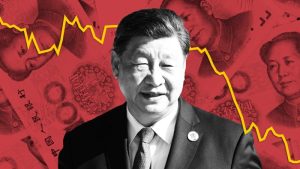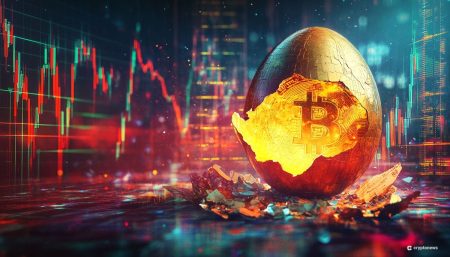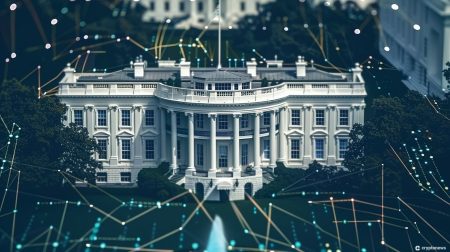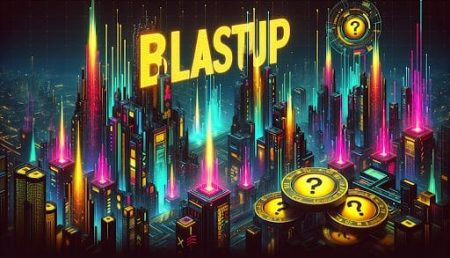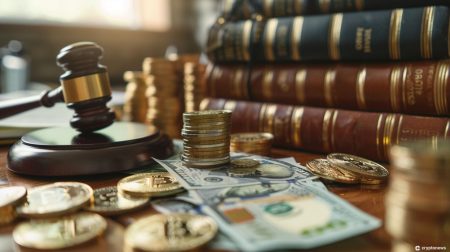The much-anticipated Bitcoin ETF approval on January 11 has set the crypto media alight. Still, despite some early signals of bullish action, the markets didn’t respond with quite the same enthusiasm, with BTC trading down 8% in the days immediately following the news. However, short-term movements were never the point of this long-fought battle. The Bitcoin ETF marks a pivotal moment for the industry. Not only is it the culmination of ten years’ worth of effort to have cryptocurrencies gain mainstream acceptance, but looking forward, it marks the starting pistol on a new era of digital asset adoption.
In fact, according to Blackrock’s Larry Fink, the ETF approval is the first step towards a new financial world. He told CNBC’s Squawk Box that ETFs are only a precursor to the tokenization of “every financial asset,” stating his belief that moving assets onto the blockchain will “eliminate all corruption.”
Even before Fink’s bullish sentiments, tokenizing real-world assets (RWAs) had become one of the biggest trends sweeping traditional financial institutions. When Boston Consulting Group predicted in late 2022 that asset tokenization would reach $16 trillion within the next decade, it may have seemed outlandish to some. However, fast-forward to the end of 2023, and institutions such as HSBC and Deutsche Bank are gearing up to offer custody of tokenized assets to their customers, while asset management giants Brevan Howard and Hamilton Lane have moved to become the first to put idle funds to use on the blockchain. The Libre protocol will go live in the first quarter of 2024, offering tokenized assets and smart contracts via Polygon.
Making Real Estate a Real Investment Opportunity
However, while it may be hard to believe, traditional financial assets are only a relatively small fraction of the overall opportunity for asset tokenization. For instance, a recent report carried out by The Tokenizer into the opportunities of real estate tokenization found that a global property market worth an estimated $228 trillion is accessible to just 3% of the global population. However, real estate tokenization, pioneered by projects like Blocksquare, enables a single piece of real estate to be represented on the blockchain as multiple tokens, allowing people to invest in just a fraction of a property and making the market more liquid and accessible.
Of course, in practice, real estate purchasing is a formal and usually complex legal process that takes place off-chain. In September 2023, Blocksquare achieved a significant milestone when it successfully executed the world’s first notarized tokenization of a real estate property. A parking slot in Ljubljana was successfully sold and integrated with the Slovenian Land Registry, making it the first lawful on-chain real estate transaction concluded under EU law.
We’re thrilled to share that we’ve added another two properties this week, edging us ever closer to $100m of assets under #tokenization!
🔥 $76.2m (+$0.5m 🆕) of tokenized #RWA
🔥 87 (+2 🆕) properties
🔥 19 countries
🔥 9 marketplacesWelcome to the future of #RealEstate$BST pic.twitter.com/rcaqWkVlHX
— Blocksquare (@blocksquare_io) December 28, 2023
Blocksquare is now also gearing up for its next big milestone – the listing of its native governance token, BST, on the BitMart crypto exchange. BST is the medium of exchange on Oceanpoint, a decentralized finance platform developed by Blocksquare to facilitate tokenized real estate investing. When investors stake BST on Oceanpoint, they’ll receive staked BST, which allows them to participate in the platform’s decentralized governance.
Tokenizing Non-Financial Assets
Other types of assets are also ripe for tokenization as a means of improving liquidity and market access. Fine art is one standout example – an asset that’s traditionally been closed to all but the most elite investors, who often find themselves holding onto assets for longer than they’d wish until they can find a suitable buyer. But thanks to tokenization, anyone could soon be investing in an original work by artists such as Banksy or Andy Warhol. Art tokenization protocol 10101.art recently collaborated with Monada Art Gallery in Dubai to tokenize work by these two artists.
Even the World Bank is exploring the possibilities of tokenization for financing infrastructure projects. A paper published last year highlighted the opportunities for using tokenization to solve some of the legacy challenges of the industry, including poor governance and the requirement of large injections of capital for projects that typically aren’t immediately profitable. Tokenizing the investment could enable access to a far larger pool of investors with stronger interests in seeing projects through to completion – for example, local residents as opposed to foreign hedge funds.
The scale of the predictions around asset tokenization speaks to the potential opportunities. Over the coming years, they could open up currently illiquid markets to billions more people, democratizing access to investing while making established markets more efficient. Larry Fink’s bold statements about a new financial world could be right on the money.
Disclaimer: The Industry Talk section features insights by crypto industry players and is not a part of the editorial content of Cryptonews.com.
Read the full article here



